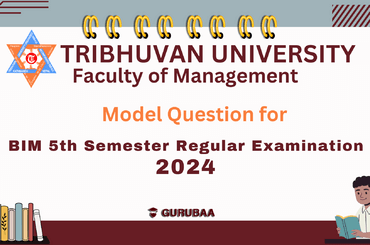Master in Technology
Introduction
The Master in Technology (MIT) program is a postgraduate degree program designed for students who want to specialize in technology-related fields. This program provides students with the necessary skills and knowledge to excel in technology-related industries.
The MIT program is a two-year postgraduate degree program that focuses on advanced technology topics and their applications. This program is designed to equip students with the skills and knowledge necessary to solve complex technological problems.
Objective:
The main objective of pursuing a Master’s in Technology is to prepare students for leadership roles in technology-related industries. Students will gain in-depth knowledge and skills in their chosen field, and will also develop critical thinking and problem-solving skills.
ELIGIBILITY:
To be eligible for the MIT program, students must have a Bachelor’s degree in a relevant field. Relevant fields may include Computer Science, Engineering, Mathematics, or Physics. Additionally, some universities may require work experience in a related field.
ADMISSION CRITERIA:
Admission requirements for the MIT program vary by university. However, most universities require students to submit an online application form, official transcripts from all previous educational institutions, and letters of recommendation from professors or employers. Deadlines for application submission may also vary by university.
Entrance Examination:
Some universities may require students to take an entrance examination before being accepted into the MIT program. The entrance examination may cover topics such as mathematics, computer science, or physics. The format and syllabus of the entrance examination may vary by university.
MIT Program Highlights:
The MIT program typically covers a wide range of technology-related topics. Core courses may include topics such as software engineering, data analytics, computer networks, and cybersecurity. Students may also have the option to specialize in areas such as Artificial Intelligence, Blockchain, or the Internet of Things (IoT).
Career Options in IT:
After completing the MIT program, graduates may have a wide range of career options available to them. Career options may include roles such as software developer, data scientist, network engineer, or cybersecurity analyst. Other roles may include project manager, IT consultant, or technology strategist.
The IT industry has experienced significant growth in recent years, and with this growth comes a variety of career options for individuals with the necessary skills and expertise. Below are some of the popular career options available in the IT industry:
- Software Developer
- Data Scientist
- Cybersecurity Analyst
- Network Engineer
- Project Manager
- IT Consultant
- Web Developer
These are just a few of the many career options available in the IT industry. Other options may include database administrator, system analyst, technical writer, and more. With the continued growth and evolution of technology, new career options will continue to emerge, providing exciting opportunities for IT professionals.
JOB PROSPECTS:
Employment prospects for MIT graduates are typically very good. Companies in a wide range of industries may be interested in hiring MIT graduates for their specialized skills and knowledge. Companies that typically hire MIT graduates may include technology firms, consulting firms, financial services firms, or government agencies.
Curriculum Structure
Syllabus I
| Course Code | Course Title | Credit Hours | Full Marks |
|---|---|---|---|
| MIT501 | Object Oriented Analysis and Design | 3 | 75 |
| MIT502 | Advanced Database System | 3 | 75 |
| MIT503 | Enterprise Applications | 3 | 75 |
| MIT504 | Information Security | 3 | 75 |
| MIT505 | Programming Language | 3 | 75 |
| Total | 15 | 375 |
Syllabus II
| Course Code | Course Title | Credit Hours | Full Marks |
|---|---|---|---|
| MIT551 | Distributed and Cloud Computing | 3 | 75 |
| MIT552 | Digital Marketing | 3 | 75 |
| MIT553 | IT Project Management | 3 | 75 |
| MIT554 | Intelligent Computing | 3 | 75 |
| MIT555 | Seminar | 1 | 25 |
| Elective I | 3 | 75 | |
| Total | 16 | 400 |
Elective courses:
- MIT556 – Internet of Things
- MIT557 – Data Structures and Algorithms Analysis
- MIT558 – E-commerce and E-business
- MIT559 – Advanced Programming
Syllabus III
| Course Code | Course Title | Credit Hours | Full Marks |
| MIT601 | Cybersecurity and Digital Forensics | 3 | 75 |
| MIT602 | Data Analytics and Visualization | 3 | 75 |
| MIT603 | Digital Governance | 3 | 75 |
| MIT554 | Term Paper | 2 | 50 |
| Elective II | 3 | 75 | |
| Total | 14 | 350 |
Electives:
- Digital Economy (MIT605)
- Mobile Computing (MIT606)
- Human-Computer Interaction (MIT607)
- Database Administration (MIT608)
Syllabus 4
| Course Code | Course Title | Credit Hours | Full Marks |
|---|---|---|---|
| MIT651 | IT Entrepreneurship and Innovation | 3 | 75 |
| MIT652 | Thesis/Project | 8 | 200 |
| Elective III | Elective Course III | 3 | 75 |
| Extra Elective | Additional Elective Course | 3 | 75 |
| Total | 14 | 350 |
List of electives/extra electives:
- MIT653: Social Network Analytics
- MIT654: Software Testing
- MIT655: Network and System Administration
- MIT656: Web Technology
- MIT657: International Business
In conclusion, the Master in Technology program is an excellent option for students who want to specialize in technology-related fields. This program provides students with the necessary skills and knowledge to excel in technology-related industries. Graduates of the MIT program have a wide range of career options available to them and are highly sought after by employers in various industries.


